At school, we are taught that electricity requires a complete circuit for current to flow.
This is approximately true. Stated another way, current pretty much only flows in loops. The amount of current entering any region of space is almost exactly equal to the amount of current leaving that region of space.
If I do something like pick up a AA battery and then touch just one of its terminals, then some current will flow, but the amount of current is so very, very tiny that we can usually assume that it's 0.
We are later taught that current flows from areas of high voltage to lower voltage.
This is completely wrong. Current flows in loops, so if you have some current flowing from an area of high potential to an area of low potential, then you must also have an equal amount of current flowing the opposite way, from low potential to high potential.
What is true is that current "wants to" flow from an area of high potential to an area of low potential. To be precise, if some device has current flowing through it from high potential to low potential, then that device is receiving energy and can use that energy to do something useful (like emit light).
If I'm an electrical device and I want current to flow through me from low potential to high potential, then I need to expend energy in order to make it do that. This is what batteries do: they use the energy stored in chemicals in order to cause a current to flow through themselves, into the low (negative) end and out from the high (positive) end.
So, current can always flow from a high-voltage line into ground since the earth is so large it essentially has an infinite amount of electrons.
That's not quite true.
Suppose that I have an enormous 12,000 V battery. If I connect one of its terminals to the ground, then pretty much nothing will happen. Since the battery doesn't have an essentially infinite amount of charge in it, only a tiny amount of current will flow very briefly. If I connect the positive terminal to the ground, then the positive terminal will have a potential equal to ground potential, and the negative terminal will have a potential equal to ground minus 12,000 V. If, instead of doing that, I connect the negative terminal to the ground, then the negative terminal will have a potential equal to ground potential, and the positive terminal will have a potential equal to ground plus 12,000 V.
Now, if I connect both of the terminals to the ground, then a large amount of current will flow. But that's not because the earth is so large that it essentially has an infinite amount of electrons; it's because I made a complete circuit.
Is the cumulative effect of this that circuits don't actually really exist in the sense of being the deciding feature in whether or not electricity can flow, and instead, all that is required is a medium through which charge can flow from high to low potential?
The thing is that in order to maintain a voltage (that is, a high potential in one place and a low potential in another place), you need to have a closed loop—a circuit. If there's a voltage between two objects, and you connect those two objects together, but there's no loop, then the voltage between those two objects will almost instantly become 0, and no more current will flow.
If that's not the case, and circuits are actually required, then how can the earth seamingly sink infinite current?
It can't. We humans don't have any way to put a large amount of current into the earth without simultaneously taking the same amount out of the earth somewhere else.
Nature is able to make large amounts of current flow in one direction only—that's called lightning! But even lightning is ultimately a closed cycle. All the electrons that a lightning strike puts into (or takes out of) the ground are electrons that came out of (or went into) the ground at some earlier time.

